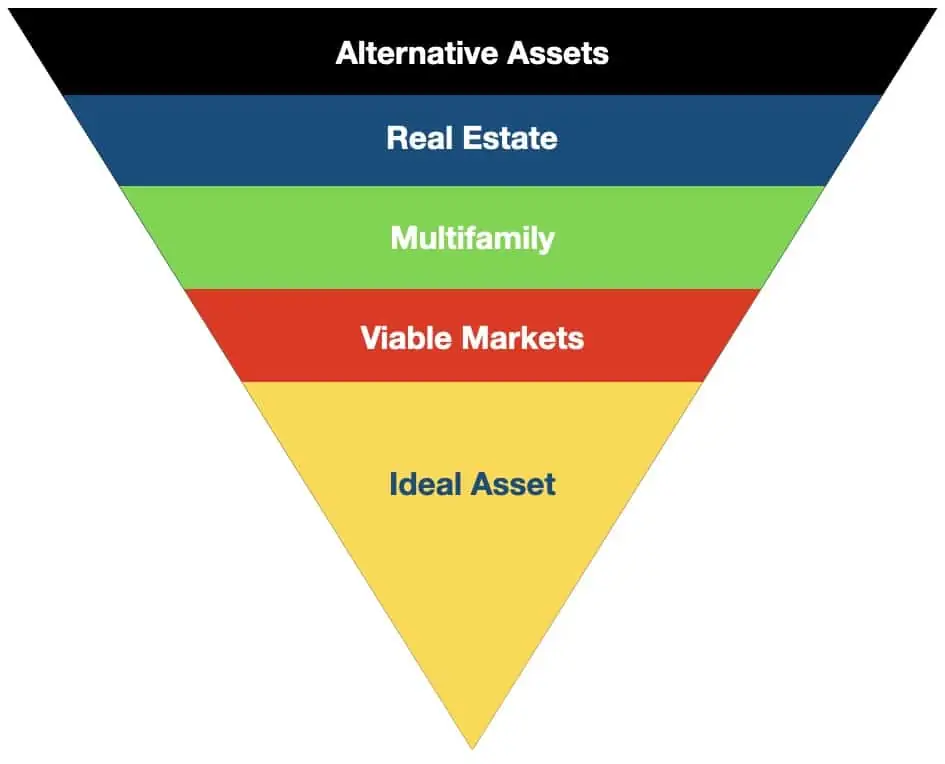There are some businesses where sourcing locally makes sense and is good for business.
For instance, the farm-to-table movement where restaurants source their meat, produce, and dairy from local sources offers their customers the freshest and healthiest products. Sourcing locally also makes economic sense by cutting down shipping and sometimes middleman expenses.
One business where sourcing locally doesn’t always make sense and it can cost you is commercial real estate (CRE) investing. When it comes to CRE investing, restricting yourself locally can deprive you of more lucrative opportunities elsewhere.
Real estate investors tend to stick with what’s familiar. That’s why they take a micro approach to investing. They look to invest in their local market (micro-market) – their current city of residence, down the street, or somewhere they are familiar with.
Having market knowledge and familiarity is a good place to start, but is it always? The Internet has made micro-investing obsolete.
Take, for instance, used car buying:
You have your heart set on a C7 Corvette, and you have a specific budget, and you like the color yellow. You look in your local ads and check with local dealers and find two available for sale – one red, one black. They’re both over your budget by $5,000. You’re willing to settle for the red one because it’s the best one available.
It may be the best available Corvette in your micro-market, but it may not be the best available Corvette available in all markets. You settled for local when if you had expanded your search and taken a more macro approach, you might have found exactly what you were looking for.
If you had searched on the rapidly growing online used car supermarket Carvana, you would have found a newer C7 with fewer miles and less money and in the color you wanted – yellow. And with Carvana’s 7-day money-back guarantee, you have nothing to lose.
With CRE investing, taking a micro approach. Settling for what’s local and available can cost you. Micro-investing is myopic and prevents you from seeing the full picture. Focusing locally may not only put you in the wrong price range, but it could put you in the wrong segment entirely.
When investing in CRE, it’s important to integrate a macro approach – taking a top-down approach to cover all your bases and to land on the optimum asset in the right segment.
Here’s my Top-Down, Macro to Micro Investment Strategy:

A top-down macro to micro strategy would start very broadly. Most of my investors start with the broader market. They may see the stock market’s volatility and hear buzz about inflation and decide they want to avoid Wall Street volatility.
They would then set their sights on alternative investments. Not satisfied with just any alternative investment, they narrow their focus on tangible assets that offer both income and growth as both a recession and inflation hedge. This lands them on commercial real estate. After researching various econometric, demographic, and population trends, investors then land on multifamily as a solid investment option.
The next step is where the smart investor and the micro-focused investor diverge. Smart investors don’t limit the next step to their micro-market, which is where most investors start and stop. Instead, they’re willing to look beyond for the best deals because choosing the ideal market is just as essential as choosing the ideal segment such as multifamily.
Just as in the Carvana example, by expanding your approach to a macroscope instead of staying micro, you give yourself better odds for finding the right asset in the right market.
Staying local can cost you. Multifamily may be trending upward nationwide, but it may be performing better in some markets more than others. In addition, some markets may be overpriced.
Taking a macro approach maximizes your odds for success.







